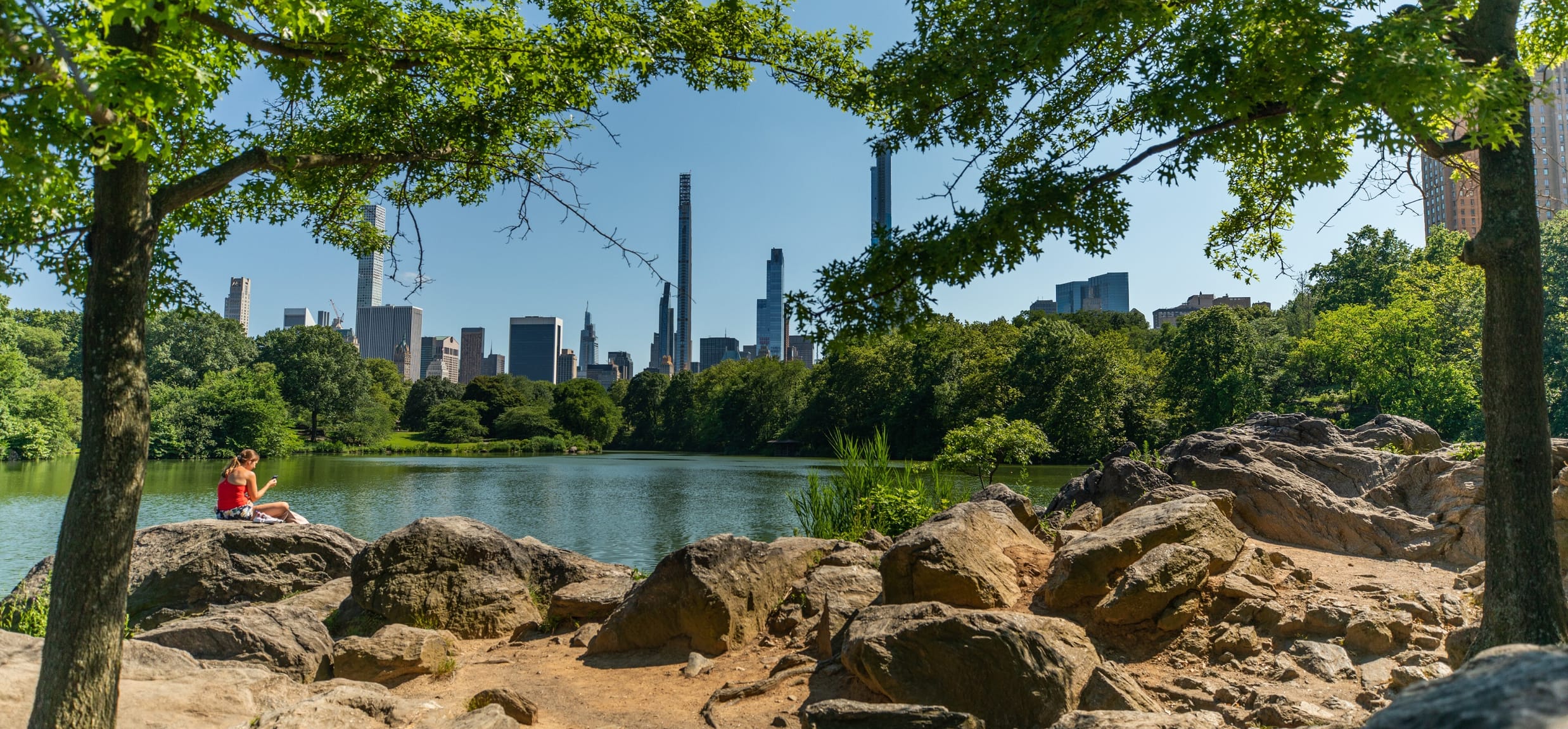Magazine
10 Enlightening Reads on Appreciating Central Park and Urban Greenspaces

More than ever, New Yorkers and others around the world are recognizing Central Park—and greenspaces like it—as essential to our health. In honor of National Gratitude Month, we’ve compiled some of our favorite reads from this year—a few that we’ve published, and many from other publications—that feature stories on the physical and mental benefits that Central Park and other public spaces provide, illustrate the importance of vibrant public spaces amid a pandemic, and more.
“‘It Sort of Gives You Hope’: One Place New Yorkers Go to Escape Their Homes”
The New York Times
When New York City shut down in March due to COVID-19, New Yorkers flocked to their local parks—locals could be together in greenspaces while still safely apart. Many rediscovered the Park, their urban oasis. “We took it for granted,” one New Yorker explains. “We don’t take it for granted anymore.”

During a year like no other, New Yorkers have rediscovered the Park as a source of mental and physical well-being.
“In Conversation with Author Florence Williams on the Benefits of Nature”
The Central Park Conservancy
In her book The Nature Fix: Why Nature Makes Us Happier, Healthier, and More Creative, author and journalist Florence Williams explores the vital importance of greenspace and our intrinsic, human need to get outside. In this conversation with Conservancy Historian Marie Warsh, Florence expands on nature’s effect on our mental health.
“New York City Has 2,300 Parks. But Poor Neighborhoods Lose Out”
The New York Times
“At the height of the pandemic, more than 1.1 million New Yorkers did not have access to any park within a 10-minute walk of where they lived,” according to the Trust for Public Land, sparking many conversations about how to expand greenspace access to underserved New Yorkers. In response to this inequity, Governors Island adopted a ticketing system prioritizing locals who lack parks in their neighborhoods, and the City opened 67 miles of streets for walking and biking.
“Catharsis in Central Park”
The Cut
Lifelong East Harlem resident Donavon Smallwood took to Central Park—a place he calls “engulfed in the therapeutic virtues of love and despair”—to capture stunning photography during the pandemic. “These images are a conversation between portraits of strangers and the expansive landscape,” he says.

New Yorkers depend on Central Park for many day-to-day activities, from morning runs to evening chats on a bench.
“5 Questions with Dr. Carolyn Finney on the Great Outdoors, Racism, and Finding Joy Through Storytelling”
The Central Park Conservancy
Amid the growing conversation about greenspace accessibility, we talked with Dr. Carolyn Finney—author of Black Faces, White Spaces: Reimagining the Relationship of African Americans to the Great Outdoors—about her book, what gives her hope about the future of the environmental and public parks movement, and more.
“Parks are essential—especially during the coronavirus pandemic”
Boston Globe
This piece details why public parks are an essential public health infrastructure—and references how Central Park’s East Meadow was home to a field hospital this spring to serve New Yorkers sickened by COVID-19.
“Placing Women on a Different Sort of Pedestal”
The New York Times
This summer, Central Park welcomed its first statue depicting real women: Sojourner Truth, Susan B. Anthony, and Elizabeth Cady Stanton. Explore how public monuments, and the artists who create them, are beginning to represent women and their achievements.

The Women’s Rights Pioneers Monument, sponsored and funded by the organization Monumental Women, commemorated the centennial of the ratification of the 19th Amendment, which gave women the right to vote. Women’s Rights Pioneers Monument by Meredith Bergmann©️2020 Monumental Women
“Get to Know Sara Cedar Miller, Central Park Conservancy Historian Emerita”
The Central Park Conservancy
If you really want to know Central Park—or the nonprofit responsible for it (that’s us!)—talking to Sara Cedar Miller is a great start. With her knowledge from working for the Park for nearly four decades, Sara shares what’s changed since the ‘80s, what the Park means to her during a pandemic, and more.
“Through a ‘Heartbreaking’ Year, Neighborhood Parks Help New Yorkers Roll with the Punches”
The Trust for Public Land
Roller skating took off this year in parks across the country. New Yorker Kelley Heyer details how she headed to her nearby public spaces to get moving and enjoy the fresh air this summer. “It offers freedom and community, and a chance to be silly and girly, which I love,” she says.
“Parks matter more than ever during a time of sickness—something Frederick Law Olmsted understood in the 19th century”
The Conversation
Disease control and public health informed Central Park co-designer Frederick Law Olmsted’s vision for the many urban park systems that he designed. Richard leBrasseur of Dalhousie University explains: “Of the tree-lined boulevards in his design for Central Park, Olmsted said, ‘Air is disinfected by sunlight and foliage. Foliage also acts mechanically to purify the air by screening it.’”



